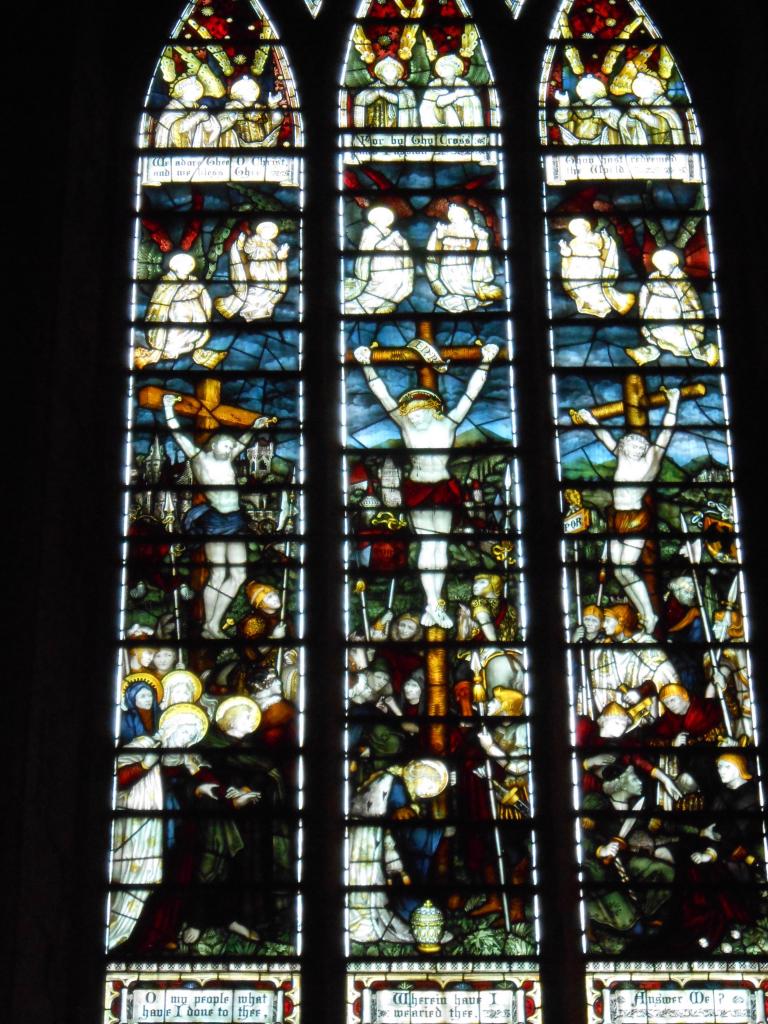Enoch & the “Son of Man”
by larryhurtado
In catching up on articles in journals, I came across Daniel Boyarin, “How Enoch Can Teach Us about Jesus,” Early Christianity 2 (2011): 51-76, and am provoked to commenting on it. Essentially, Boyarin contends that in the “Similitudes” (or “Parables) of 1 Enoch we see reflected “the development of ‘The One Like a Son of Man’ of Daniel 7 [vv. 13-14] from a simile into a title” [specifically in 1 Enoch 71:14], and that “All the elements of Christology are essentially in place then in the Parables [of 1 Enoch],” “a pre-existent heavenly figure, identified as well with Wisdom, who is the Son of Man” (74).
Given that Boyarin takes 25 pages to lay out his case, I can’t attempt a full engagement in a blog-posting (I’m sure readers are relieved to know!). I will confine myself to a few observations that give some indication of why I find his discussion unsatisfactory.
First, contrary to Boyarin, the Greek expression that appears some 80 times in the NT translated “the Son of Man” is not used as a christological title. No one ever ascribes it to Jesus. No one ever asks him if he claims to be it or accuses him of doing so. And outside the Gospels (and one singular instance in Acts 7:56) the expression never functions as a confession of faith about Jesus. Contrast this with the way that “Messiah/Christ” or “Son of God” functions in the Gospels and elsewhere in the NT. As I’ve shown in a recent study, more correctly, the expression functions linguistically simply as a way of referring to Jesus (and always as a self-reference by Jesus), but doesn’t itself ascribe anything other than participation in the human race. The sentences in which the expression is used ascribe things, but not the expression itself. (See L. W. Hurtado, “Summary and Concluding Observations,” in ‘Who is This Son of Man’? The Latest Scholarship on a Puzzling Expression of the Historical Jesus, eds. L. W. Hurtado and P. L. Owen [London: T&T Clark, 2011], 159-77.)
Second, there is no evidence of “the Son of Man” used as a title of a redeemer-figure in 2nd temple Jewish texts/traditions. The expression in Daniel 7:13-14 isn’t a title but simply “one like a son of man,” i.e., a figure that looks like a human. Even in 1 Enoch we don’t have evidence of a fixed title. English translations often give that impression, but the Ethiopic (and all we have is the Ethiopic, unfortunately) uses three distinguishable expressions, indicating that the Ethiopic translators didn’t think they were dealing with a fixed title, and suggesting that the Greek (or possibly Aramaic or Syriac) that they translated didn’t have a fixed expression either. Given his focus on 1 Enoch, Boyarin would have been advised to study the Ethiopic evidence more closely and not (apparently) build a case so readily on English translations of the text. (See now especially, Darrell D. Hannah, “The Elect Son of Man of the Parables of Enoch,” in ‘Who is This Son of Man’?, pp. 130-58, for an excellent and in-depth treatment of relevant matters.)
Third, in the reception-history of Daniel 7, there is no evidence that the figure described as “one like a son of man” was ever referred to as “the Son of Man”. Here, I can commend Maurice Casey, Son of Man: The Interpretation and Influence of Daniel 7 (London: SPCK, 1979), who shows that the figure was sometimes seen as a messianic figure but the title “The Son of Man” isn’t found.
Fourth, although there are a few instances in the Gospels where the expression “the Son of Man” is used in sentences that clearly allude to Daniel 7:13-14 (esp. Mark 14:62; 13:26 and parallels), in many (most?) other cases where the expression is used in the Gospels there is no clear allusion to Daniel. So, it’s not so clear that the expression derives from some midrashic influence of the Daniel passage.
Finally, as I’ve indicated repeatedly over about 25 years now, in fact the most significant innovation in the way Jesus was treated in earliest Christian circles wasn’t acclaiming him as Messiah or whatever, but was comprised in the programmatic way that he functioned in their devotional life/practice. I’ve repeatedly itemized the specifics of that practice, and it would be nice if other scholars who engage relevant questions either showed me wrong or acknowledged the evidence. It won’t do simply to ignore it or assert that it doesn’t matter.
In short, although the figure in 1 Enoch referred to as “the/my Elect One” and “the/my Righteous One” (and these do seem to function as titles for the figure) is a remarkable instance of ancient Jewish messianic speculation, and illustrates the diversity and midrashic creativity of ancient Jewish circles. But 1 Enoch doesn’t actually give us the secret to earliest Jesus-devotion, and doesn’t actually show us “all the elements of Christology” already in place there. It is possible to assert otherwise, but not on an adequately informed basis.













